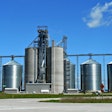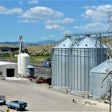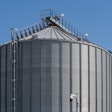
Directors of Minnesota cooperative grain elevators are the "guardians" of those businesses and must be keenly aware of marketing risks and policies, especially when markets are volatile and farm-customers are facing cash flow problems, according to a report in AgWeek.
John Christianson of Christianson PLLP at Willmar, MN,was one of the speakers on March 7 at the 111th Minnesota Grain & Feed annual meeting and trade show at the Mystic Lake Casino Hotel in Prior Lake.
Bob Zelenka, executive director of the association, said about 600 attended the event, which also included a trade show. When he started in the business more than three decades ago there were 2,600 attendees, but there has been considerable industry consolidation. Thirty years ago there were 275 local co-ops but today there are fewer than 70. Today, the association has 200 members, including co-ops, private elevators and some vendors.
The Christianson firm operates in 36 states and has a focus on agricultural businesses. The certified public accounting firm has a special focus on ag production, processing, grain elevators and feed mills.
Christianson said the board is responsible for hiring the chief executive officer but also for setting guidelines and monitoring their compliance. He says common problems are people transacting grain beyond their authority or using trading instruments that create losses for the business.
Christianson told about cases in which traders were operating out of their authority, or with instruments and derivatives outside of the risk management strategy set by the board. There must be "segregation of duties," so that no one person can "take a transaction all the way through," without a colleague's review.
"We're dealing with a commodity-based business," Christianson says. "A commodity-based business has a high level of volatility, there is a substantial amount of risk."
On the farm supply side, co-ops selling chemicals, feed and fertilizer can put the company at risk for receivables that are not collectable. "This type of receivable management takes more work, takes more time," he says. His company is one that trains companies on policies and then helps audit them.
"Oftentimes it comes back to lack of controls, a lack of direction and leadership from the board of directors," Christianson says of failures. One co-op director from a Minnesota elevator, who declined to be identified by name, told Agweek that he wished he'd heard Christianson's talk five years ago, before his company had to cope with serious trouble.
Kent Thiesse, a farm management analyst and vice president of MinnStar Bank of Lake Crystal, MN, described a "continued pattern tight margins" that won't go away anytime soon.
Thiesse estimates that about 20% to 25% of cash crop farmers are having to restructure debt to survive. Another 25% to 40% are not making huge profits. About a third of the farmers — often with land paid for — are doing quite well and in a position to make strategic maneuvers. Among other things, he said farmers need to be willing to give up some unprofitable lands where rental rates are too high.
Joe Martin, Minnesota state executive director for the U.S. Department of Agriculture's Farm Service Agency, said his agency's loan programs are getting more of a workout in the difficult farming times.

















